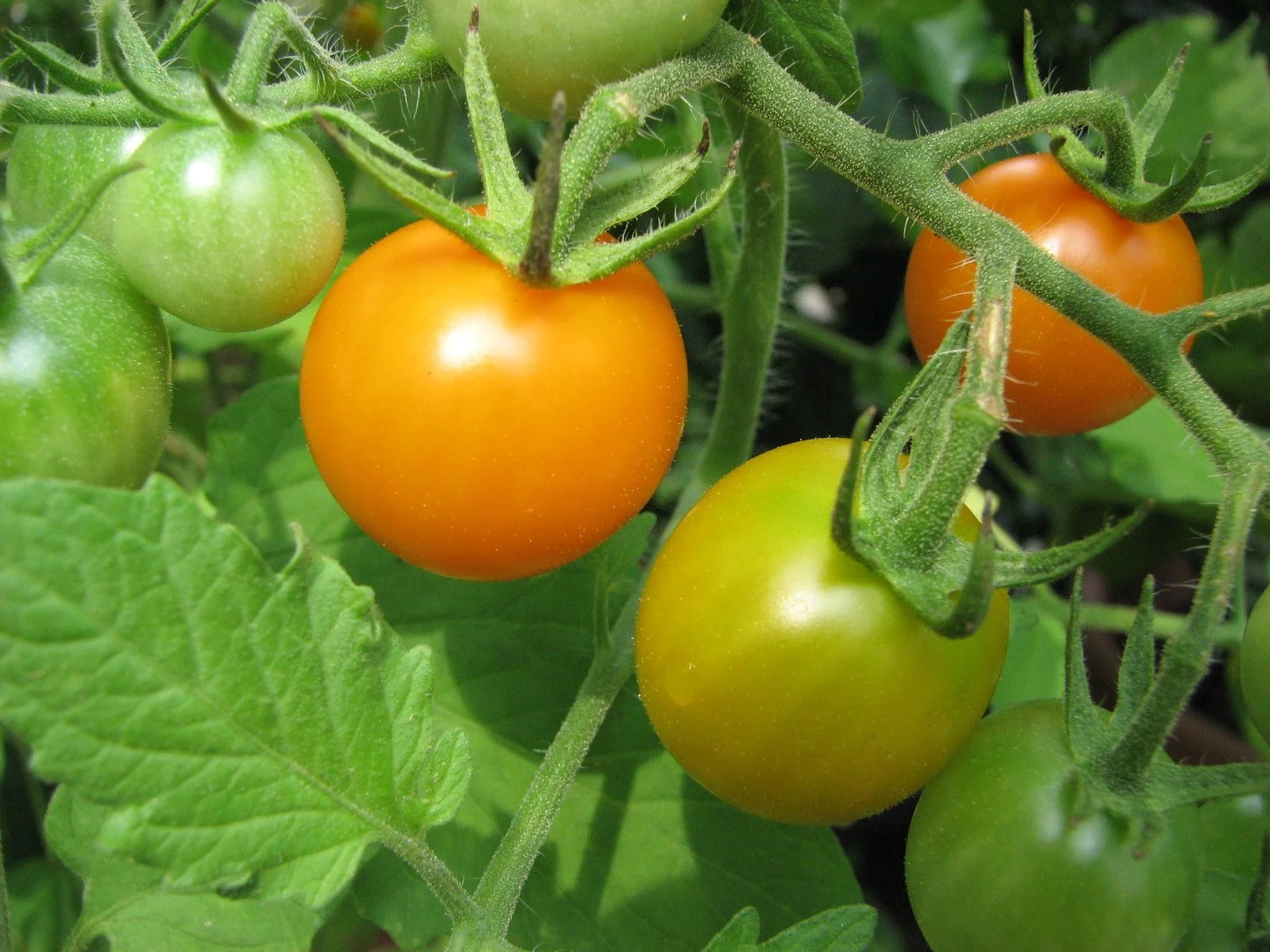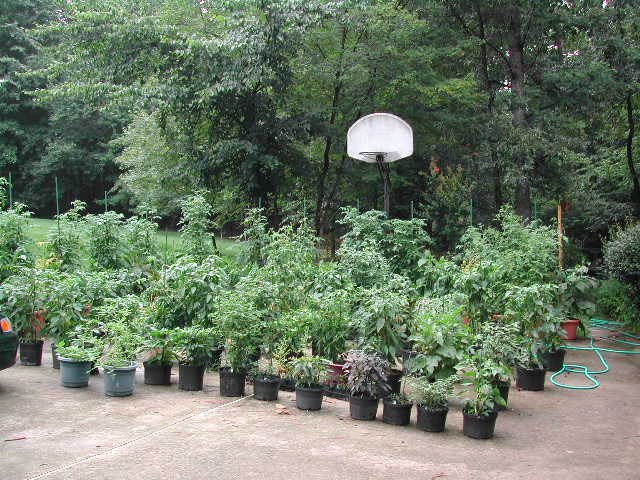Inside back cover of 1987 SSE yearbook, spotlighting and extraordinary person
We are just finishing up a truly picturesque snowstorm. Shoveling done, gas logs lit, seems a perfect time to keep pushing ahead on my seed tour blogs - so I am moving faster than my weekly target (for the moment - taking advantage of a nice slow day listening to WNCW and watching snow drifting down)
I’ve started using tags and categories so it is easier to find the two series of blogs I am working through. The seed collection tour blogs are tagged with the term “seed collection” so you can view them as a group if you wish - find the tag list to the right of the blog. The Off The Vine reposts are tagged with “Off The Vine”.
Strap in, and let’s continue the journey.
Tomato 31 - Nepal - this unassuming medium sized red tomato is THE tomato hero in my collection. Purchased from Johnny’s in 1987 (lured by the description mentioning superb flavor), it pretty much single-handedly converted me from dabbling in hybrids to focusing on heirlooms. It excelled in my 1987 garden and excelled last year in my 2021 garden….as well as many of my gardens in between. It began to bear ripe tomatoes in 82 days, and I picked 60 tomatoes at an average weight of 7 ounces, for a plant yield of 26.5 pounds. I rated it an A in flavor; it was the best tomato in my garden that year.
Tomato 32 - Sugar Lump (aka Gardener’s Delight) - I purchased this from Johnny’s in 1987, seduced by the description of excellent flavor. Alas, it was pretty ordinary to my palate. It started to bear fruit in 72 days, so was an early/midseason variety. I picked 580 tomatoes with an average weight of half an ounce, giving the plant a yield of 18 pounds, quite good for a cherry tomato. I rated the flavor B+, so clearly didn’t dislike it and I may have graded it a bit softly, as I never did grow it again.
Tomato 33 - Jet Star F1 hybrid - this is the second of the renown Harris tomato hybrid trio, and it was purchased from them in 1988 (along with Moreton and Supersonic). Oddly, I never did end up growing it until many years later, in 2004. It didn’t particularly distinguish itself, but we will get to that eventually - I had to repurchase seeds, and we’ll revisit it when I make it to tomato number 1468!
Tomato 34 - Supersonic F1 hybrid - this is the third, and last, of the Harris tomato hybrid superstar trio, also purchased from their catalog in 1988. This was the Harris answer to Better Boy and Ultra Boy and Whopper, a large fruited scarlet hybrid. As with Jet Star, I didn’t grow it in 1988 - and in fact didn’t revisit it until 2004, when it grew along side Moreton and Jet Star. I do believe that I grew it from a nursery purchased plant in 1986 and it was indeed very much like Better Boy and Whopper - a fine large scarlet tomato.
Tomato 35 - Ultra Sweet F1 hybrid - the Stokes catalog really raved about this relatively new hybrid variety and I purchased and grew it in 1988. They noted that it ripened internally quite early, which gave it a better, sweeter flavor. I didn’t find anything particular noteworthy about it, however. It did come in relatively early, starting to yield tomatoes in 67 days. I picked 44 tomatoes from the plant at an average size of 6.7 ounces. The total plant yield was 18 pounds. I found the tomatoes too firm, and lacking intensity, and it earned a B grade. I never grew it again.
Tomato 36 - Calypso - I was sent this variety as a bonus pack from the Tomato Seed Company in 1988. From a Google search, it appears to be a medium sized scarlet variety that does well in heat and humidity. Alas, I never did grow it, so have no opinion of the variety.
1987 SSE yearbook page for the variety Sabre, below
Tomato 37 - Sabre - SSE member Charles Estep sent this variety to me upon request in 1988. It was described as being particularly attractive and having a “sharp” flavor. It grew a regular leaf plant for me, but a search about indicates there are potato leaf “versions” out there as well (not an uncommon circumstance for many heirloom varieties). The variety seemed to originate with SSE member Don Branscomb, a collector of many varieties, particularly from the USDA germplasm collection. I grew Sabre in my 1988 garden. I was relatively late, coming in at 82 days. I harvested 34 tomatoes of an average weight of 10 ounces; the plant yield was 21 pounds. The oblate pink tomatoes were not wonderful, with a bit of the unusual “musky” overtones that quite a few pink heirlooms seem to possess (the most notorious, for me, being the NC heirloom German Johnson, a locally popular tomato that is simply not one I enjoy eating). It achieved a B rating. I did save seeds, but didn’t grow it again.
Tomato 38 - Wayahead Improved - selected from the Jung seed catalog in 1988, and grown in that year’s garden, this was described as one of their most popular tomatoes, with high quality despite being quite early. The “Wayahead” name graced various early tomatoes from this or that seed company for decades. Market gardeners found profit in getting high quality tomatoes as early as possible in the season, which made tomatoes with early-indicating types of names very popular. Sadly, this tomato was a pretty big let down, seemingly diseased. I grew it in my 1988 garden and it was situated in the front row. The growth habit was determinate. It was quite early, starting to bear ripe fruit in 66 days. I picked 35 scarlet tomatoes that averaged but 2.5 ounces in weight, and possibly due to disease issues (I speculated Tomato Mosaic Virus at the time), only 5.6 pounds of fruit came from the plant. It also ranked low in flavor, with a B-, at the bottom of my 1988 tomato efforts. I never gave it another chance. Seeds were not saved.
Tomato 39 - Gurney Girl F1 hybrid - I received a lot of seed catalogs each year starting in 1986, and became familiar with all sorts of companies that were new to me, such as Jung, Field and Gurney. When selecting varieties for my three year heirloom vs hybrid contest, I chose this variety, lauded in the Gurney catalog, to include, purchasing the seed from them, and growing it, in 1988. First harvest occurred in 67 days from transplant, and the 34 harvested fruit averaged 6.5 ounces, giving a plant yield of 14 pounds. I rated the flavor a solid A, clearly one of the best tasting scarlet red, medium sized hybrids. I never did grow it again.
Tomato 40 - Czech’s Excellent Yellow - this is another tomato variety included in a request by SSE member Jim Halladay from Pennsylvania in 1987. Jim noted that it was developed by a Czech tomato breeder and initially collected in the US by Ben Quisenberry in the mid 1970s. It was just a lovely experience to grow, earning a place in my 1987 garden, and so was one of the varieties instrumental in converting me to heirloom varieties. The foliage was a particularly deep shape of bluish green. The tomatoes began to come in at 71 days from transplant. I harvested 140 tomatoes of an average weight of 3 ounces - perfectly smooth, round bright yellow globes. The plant yield was an impressive 26.5 pounds. I found the flavor sweet and mild, a solid B+, lacking a bit of a tart snap for me to provide balance. I haven’t grown it often and suspect that saved seeds are too old to germinate. I would love to have it in my garden again some day.
There you have it - that was a pretty mixed set of varieties, mostly red, with one superstar (Nepal) that I still enjoy in recent gardens. Have a good week - I’ll be back with #41-50 soon, with a few historically important ones and another long time favorite heirloom.
1987 SSE yearbook - you can read the Czech’s Excellent Yellow entry

















































